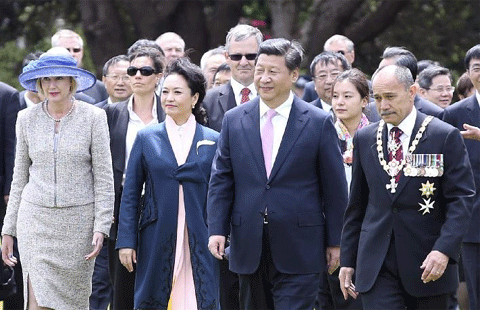Experts: Local govt debt may see sharp growth
Updated: 2014-11-21 08:33
By Zheng Yangpeng(China Daily)
|
|||||||||
Despite efforts to curb the growth of local government debt, bond financing is likely to set a record next year, analysts said, as infrastructure spending is unlikely to fall and more bonds will be rolled over to reduce interest payment pressure.
In addition, a trial program that allows provincial-level governments to issue and repay bonds on their own is likely to expand next year, creating more demand for the bond market.
However, most credit rating analysts said that risks would decline overall as the freewheeling, opaque local government debt market is replaced by a more regulated municipal bond market.
Local government debt and contingent liabilities ballooned to 17.89 trillion yuan ($2.93 trillion) as of June 30, 2013, according to the National Audit Office, and 39 percent of the total was raised through the 10,000-plus local government financing vehicles that were established to skirt a ban on direct borrowing.
Many LGFVs have very weak financial profiles, with low or negative cash flow. Last year, Moody's Investors Service found that about half of the LGFVs it surveyed (and that it considered to have better financials than average LGFVs) could not meet their interest and debt repayments for that year without refinancing.
To tackle the increasing risks, the central government in May launched a program that allowed 10 provincial-level governments to issue municipal bonds. But the 109.2 billion yuan quota was minimal compared with the country's total debt size.
The program will get bigger and cover more localities in 2015, the China Securities Journal reported, without citing a specific source.
Through a series of policy announcements, the central government has laid out a multi-pronged strategy to cope with the problem. It aimed to close the old channels through which local debts were raised (mainly LGFVs), and open a new gate for local government financing.
In a guideline published on Oct 2, the State Council specified the purposes for which local governments could and could not borrow. For public projects with little or no commercial returns, local governments can now issue bonds.
Commercially oriented projects would be financed through the market, separated fully from local governments' budgets.
The framework also clarified the responsibility for the stock of existing debt. Only debt borrowed or payable by local governments and agencies would be categorized as "local government debt".
"Debt borrowed by enterprises for which local governments are not liable will be paid according to market rules. This may involve writedowns, although local governments will probably honor earlier commitments as guarantors. Local governments may apply to swap existing debt for bond issues to reduce interest costs and extend maturities," said Louis Kuijs, chief China economist with Royal Bank of Scotland Plc.
The guideline for the first time clarified that LGFVs could not issue new "government debt". But analysts said LGFVs will exist as local State-owned enterprises selling bonds for projects with commercial returns.
Issues of chengtou notes - debt products issued by LGFVs - from January to October hit a record 1.45 trillion yuan, according to Wind Information Co Ltd.
Most analysts said by providing clear rules on issues and repayment responsibility, the new framework is a step in the right direction. But concerns linger.
Niny Khor, an Asian Development Bank economist, said the ratings given to bonds sold by 10 governments (all triple As) failed to distinguish among issuers' financial profiles. Whether local governments would toe the line to use LGFVs for financing is unknown. The current property downturn also cast doubts on local governments' repayment ability.

 Jack Ma shares tips at Internet summit
Jack Ma shares tips at Internet summit
 President Xi attends welcoming ceremony in Wellington, New Zealand
President Xi attends welcoming ceremony in Wellington, New Zealand
 Car-rental firm revs up Wall Street
Car-rental firm revs up Wall Street
 Cui hails Obama's China trip
Cui hails Obama's China trip
 Peek into the life of Puju performer
Peek into the life of Puju performer
 Top 10 most powerful businesswomen in China
Top 10 most powerful businesswomen in China
 Top 10 most powerful businesswomen in China
Top 10 most powerful businesswomen in China
 Love conquers leprosy in Luduo village
Love conquers leprosy in Luduo village
Most Viewed
Editor's Picks

|

|

|

|

|

|
Today's Top News
Deng Long: New York supermarket king
China wants its voice heard in cyberspace
New Zealand welcomes Xi
Alipay brings the frenzy of Black Friday to China
Emission goals in China on target for 2020
Li positive on govt-Qualcomm resolution
E-commerce will change global trade: Jack Ma
Jack Ma shares tips at Internet summit
US Weekly

|

|








